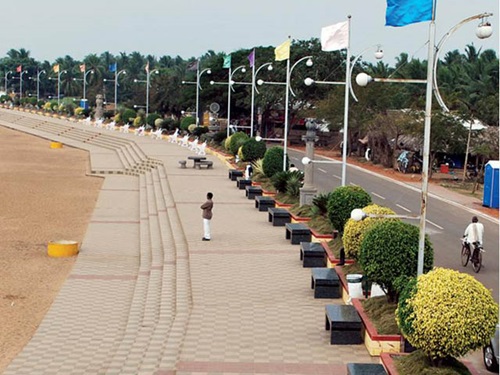 Government of Puducherry
Government of Puducherry

PUDUCHERRY
Beneficiary Oriented Solution - State
Others
Published By: N
The Union Territory of Pondicherry was merged with the Indian Union with effect from 01-11-1954 in accordance with the de-facto agreement between the Government of India and the Government of France, which was signed on 21-10-1954. De-jure transfer of Pondicherry took place on 16th August 1962. Thereafter, the Union Territory of Pondicherry is administered under the provisions of Government of Union Territories Act, 1963. The Union Territory of Pondicherry consists of four regions namely Pondicherry, Karaikal, Mahe and Yanam lying geographically separated from one another. Pondicherry region which is on the East coast, about 162 kms. South of Chennai is the largest of these and consists of 12 scattered areas interspersed with enclaves of Villupuram and Cuddalore Districts of Tamil Nadu. Karaikal region is about 160 kms. south of Pondicherry and it is surrounded by Nagapattinam District of Tamil Nadu. Yanam region is located about 840 kms. North east of Pondicherry near Kakinada in Andhra Pradesh. Mahe region lies almost parallel to Pondicherry 653 kms. away on the west coast near Tellicherry in Kerala.
Project Details

Brief Background
The Union Territory of Pondicherry was merged with the Indian Union with effect from 01-11-1954 in accordance with the de-facto agreement between the Government of India and the Government of France which was signed on 21-10-1954. De-jure transfer of Pondicherry took place on 16th August 1962. Thereafter the Union Territory of Pondicherry is administered under the provisions of Government of Union Territories Act 1963. The Union Territory of Pondicherry consists of four regions namely Pondicherry Karaikal Mahe and Yanam lying geographically separated from one another. Pondicherry region which is on the East coast about 162 kms. South of Chennai is the largest of these and consists of 12 scattered areas interspersed with enclaves of Villupuram and Cuddalore Districts of Tamil Nadu. Karaikal region is about 160 kms. south of Pondicherry and it is surrounded by Nagapattinam District of Tamil Nadu. Yanam region is located about 840 kms. North east of Pondicherry near Kakinada in Andhra Pradesh. Mahe region lies almost parallel to Pondicherry 653 kms. away on the west coast near Tellicherry in Kerala. Location Pondicherry is situated between 11 _46 and 12 _ 30 northern latitude and between 79 36 and 79 53 of eastern longitude. It is surrounded by the Bay of Bengal on the east and by the Cuddalore and Villupuram Districts of Tamil Nadu on all other sides. Karaikal is located between 10_49 and 11-01 north latitude and 79_43 and 79_52 east longitude. The boundaries of the District are the Bay of Bengal on the East and Nagapattinam and Thanjavur Districts of Tamil Nadu on the three sides. Mahe District is located between 11_42 and 11_43 north latitude and 75_31 and 75_33 east longitude. Mahe is enclaved within the confines of the Kannur and Kozhikode District of Kerala. Yanam is located between 16_42 and 16_46 north latitude and 82_11 and 82_19 east longitude.Yanam is encircled by the East Godavari District of Andhra Pradesh.
Objective
Economic Development: Promote sustainable economic growth in rural areas by supporting agriculture small-scale industries and entrepreneurship. Poverty Alleviation: Implement schemes aimed at reducing poverty through skill development job creation and social welfare programs. Infrastructure Development: Enhance rural infrastructure including roads water supply housing and sanitation to improve overall quality of life. Social Upliftment: Address inequalities by empowering marginalized communities women and weaker sections of society. Employment Generation: Create opportunities under programs like MGNREGS (Mahatma Gandhi National Rural Employment Guarantee Scheme) for livelihood security. Capacity Building: Improve skills and capacity of rural populations for better participation in local governance and economic activities. Environmental Sustainability: Promote eco-friendly practices and natural resource management.
Benefits
Improved Livelihoods: Increased job opportunities and income generation through skill development and employment schemes. Better Infrastructure: Enhanced access to basic amenities like drinking water sanitation and transport facilities. Social Inclusion: Focused support for women SC/ST and other vulnerable groups ensures inclusive growth. Enhanced Quality of Life: Improved housing education healthcare and nutrition for rural populations. Empowered Communities: Strengthening of local self-governments (Panchayati Raj Institutions) ensures participatory and decentralized governance. Environmental Conservation: Better waste management renewable energy projects and sustainable farming practices contribute to ecological balance.










